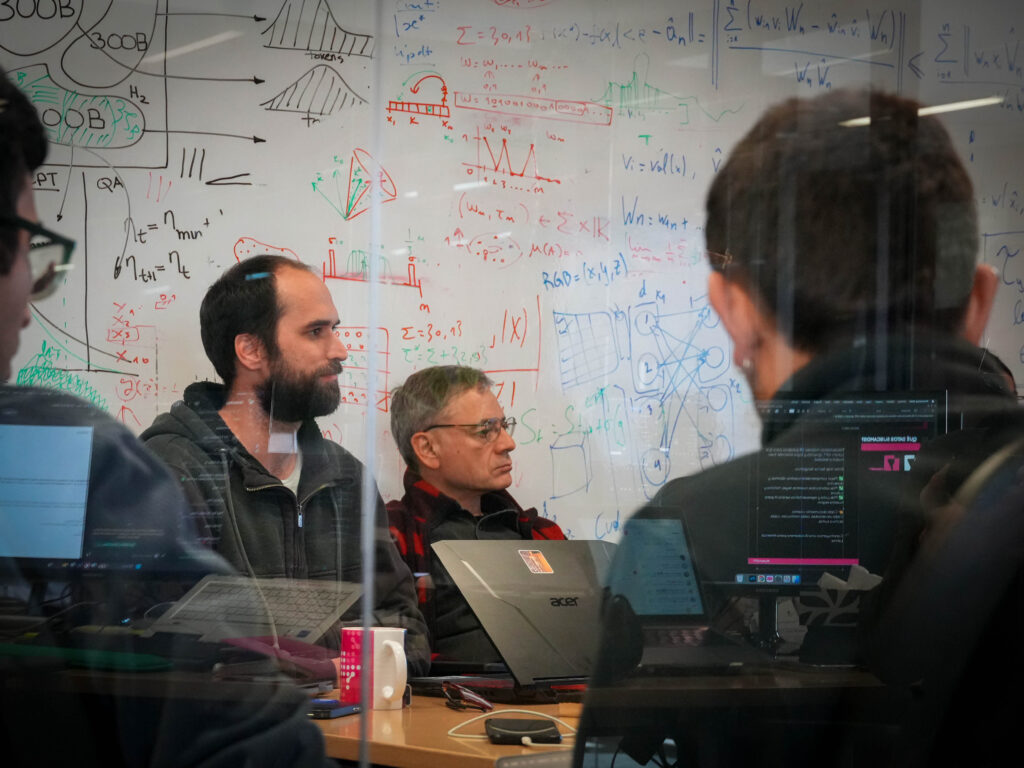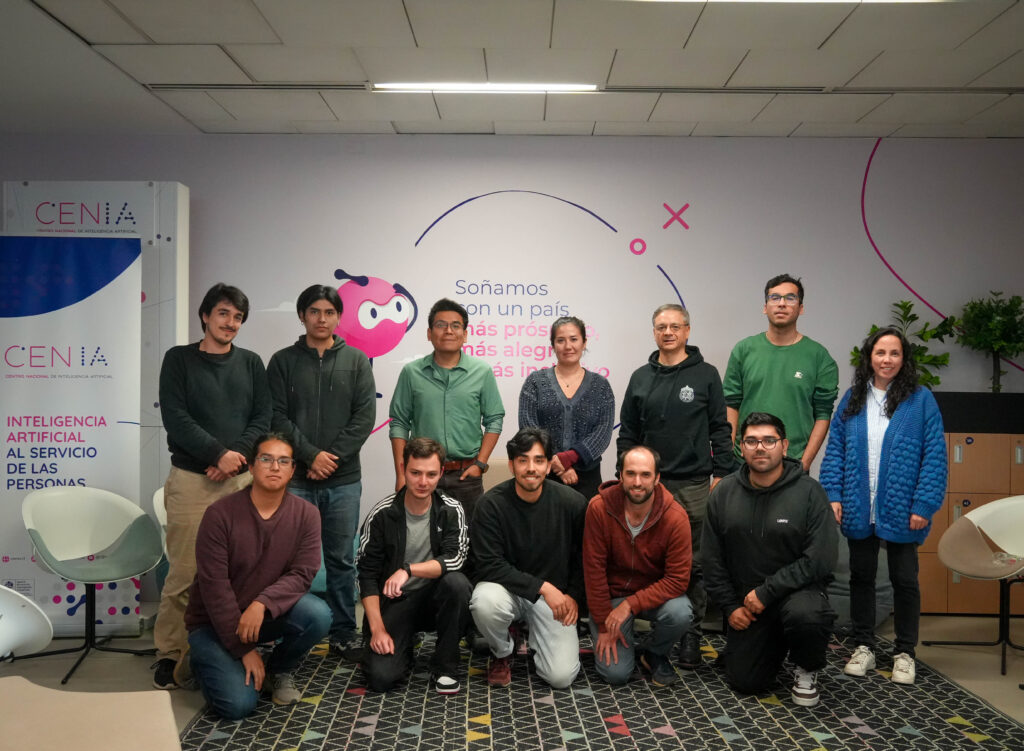An AI that speaks the languages of Latin America
Description
Latin American researchers are developing a new artificial intelligence model — one that aims to speak the region’s languages and reflect its cultures.
The model, known as Latam-GPT, is under construction in Chile and led by the country’s National Center for Artificial Intelligence (CENIA) in Santiago. It’s being trained on local data — from academic archives and news stories to oral histories documented on paper — with contributions from over 30 organizations across the region.
The initiative is part of a broader movement in the Global South to reduce dependence on foreign-built AI systems, most of which are developed in the United States, China or Europe.
Advocates view Latam-GPT as a step toward digital sovereignty: giving Latin American countries more control over how AI is built, governed and applied.
For Alexandra García, a project specialist at CENIA, the need for a culturally grounded model became clear through everyday interactions with commercial AI tools.
A few years ago, she asked a chatbot, “How do you eat sopaipillas in Chile?”
In Chile, sopaipillas are fried discs of pumpkin-based dough, typically served with mustard, chili sauce or syrup. But the AI responded with a different recipe — fried bread with honey.
“It may sound like a small thing, but the model got it wrong — and that says a lot about who it was built for,” García said.
<figure class="wp-block-image size-large">
 <figcaption class="wp-element-caption">Researchers at the National Center for Artificial Intelligence (CENIA) in Santiago, Chile, aim to enhance the digital sovereignty of Latin American countries by reducing their reliance on foreign AI tools and building their own.Courtesy of CENIA</figcaption></figure>
<figcaption class="wp-element-caption">Researchers at the National Center for Artificial Intelligence (CENIA) in Santiago, Chile, aim to enhance the digital sovereignty of Latin American countries by reducing their reliance on foreign AI tools and building their own.Courtesy of CENIA</figcaption></figure>She also noticed factual errors, or hallucinations, when asking about Latin American women authors. Even as AI tools improve, she said, they often fall short when the training data doesn’t reflect regional experiences.
Unlike most commercial models, Latam-GPT is being built using open-source tools and training data from local institutions — including universities, libraries, newsrooms and Indigenous communities. All the data is used with explicit permission, García said.
“We wanted a model where you know where the data comes from,” García said. “That level of transparency just doesn’t exist in most commercial systems.”
García says the team’s goal is not to compete with major global models, but to build a tool “from and for Latin America.”
Replicating global patterns
Some researchers warn that simply localizing an AI model isn’t enough to prevent deeper structural problems.
“It’s not enough to replicate large language models with local data,” said Ulises Mejías, a researcher at the State University of New York who studies digital inequality and data colonialism. “If you’re reproducing the same economic and political structures, the result will be the same.”
Mejías highlights the way commercial AI models centralize power, prioritizing dominant narratives and overlooking marginalized voices. Even in regional projects, he says, there’s a risk, even unintentional, of erasing communities that are underrepresented in media or academia.
He also raised concerns about the environmental impact of large-scale AI.
A 2023 study estimated that training GPT-3 consumed more than 700,000 liters of water, much of it for server cooling.
CENIA plans to host Latam-GPT on Amazon Cloud temporarily, before migrating to a solar-powered data center in Chile’s Atacama Desert — one of the driest and sunniest places on Earth.
<figure class="wp-block-image size-large">
 <figcaption class="wp-element-caption">Researchers at CENIA say they don’t want to compete with major global models, but to build a tool “from and for Latin America.”Courtesy of CENIA</figcaption></figure>
<figcaption class="wp-element-caption">Researchers at CENIA say they don’t want to compete with major global models, but to build a tool “from and for Latin America.”Courtesy of CENIA</figcaption></figure>But the region has also seen tensions between Indigenous communities and mining companies over lithium extraction and water use.
“We’re very aware of those issues,” García said. “That’s why transparency and public dialogue are essential to the project.”
Labor, language and inclusion
The Global South has long contributed labor to the AI industry, often invisibly. Latin American workers are frequently hired to label data or moderate content, often in low-wage roles with little job security.
Sebastián Lehuedé, a Chilean researcher at King’s College London, said those workers — and the communities they come from — are rarely part of decision-making.
“Latin America already supplies the raw materials, minerals, energy and labor,” he said. “Now we need to ask how those same groups can benefit.”
For Lehuedé, the real test is whether regional AI models, such as Latam-GPT, address Latin America’s structural challenges.
“We should be asking how these tools help us deal with inequality, human rights, climate change and democratic decline,” he said.
Despite concerns, researchers see hope in how communities across Latin America are already using AI for their own needs.
In Brazil, one initiative helps connect homeless individuals with services and shelters through AI-driven platforms. Also, environmental activists are using algorithms to detect illegal logging.
In Mexico, feminist collectives have developed autonomous digital infrastructures, known as feminist servers, to host websites, coordinate activism and safeguard data outside of major corporate platforms. These servers aim to disrupt reliance on big tech while promoting digital self-determination for marginalized groups.
And the grassroots agency La Vía Campesina, a network of smallholder farmers in Colombia, has been actively discussing technology sovereignty, working to adapt the digital tools used in agriculture so they support local autonomy instead of reinforcing dependence on multinational tech firms.
“These are grassroots examples of how AI can serve the public good,” said Lehuedé. “The question is whether projects like Latam-GPT will support those efforts.”
The team behind Latam-GPT anticipates releasing the initial version of the model in late 2025, primarily for use by developers and institutions across Latin America. A second phase — aimed at making the tool accessible to the general public — is planned for later, once the infrastructure and governance framework are fully in place.
The post An AI that speaks the languages of Latin America appeared first on The World from PRX.





